A Smarter Ab Workout That Hits Your Deep Core, Stabilizing Muscles
If you want a strong core, you have to go deep. That means looking past the much-celebrated rectus abdominis (yes, the “six-pack” is functionally important too, but it gets enough attention) and focus on the inner-most muscles that provide cyclists with the stability they need to maintain proper form and alignment, especially when the miles add up and fatigue sets in.
Deep core exercises target muscles that aren’t always associated with the typical core workout: the transversus abdominis, the multifidus, the pelvic floor, and the diaphragm. Doing exercises for the deep core muscles is important in cycling performance to help the larger muscles perform optimally, says Noam Tamir, C.S.C.S., CEO and owner of TS Fitness in New York City.
The Benefits of Deep Core Exercises for Cyclists
The deep core is a cyclist’s foundation—if it’s weak, you’re building on shaky ground and will never maximize your performance, Tamir says. Worse yet, you could struggle with injuries, as the deep core stabilizes the pelvis and keeps rotation and lateral flexion (or side-to-side bending) of the torso in check. In other words, your body stays in better alignment on the road so one muscle or tendon isn’t taking on a lot of extra work or moving in a not-so-optimal manner.
Programmed by Tamir, the following exercises target the deep core while also working the glutes, hamstrings, and obliques. The three-round circuit can be used as a stand-alone core workout, or you can do a single round every day to help maintain strength and keep the core primed for your rides.
How to use this list: Perform the following exercises in order, for the number of reps listed below. Complete a total of 3 rounds, and rest 30-60 seconds between sets.
Each move is demonstrated by Tamir in the video above so you can learn the proper form. An exercise mat is recommended.
1. Dead Bug Knee-to-Elbow
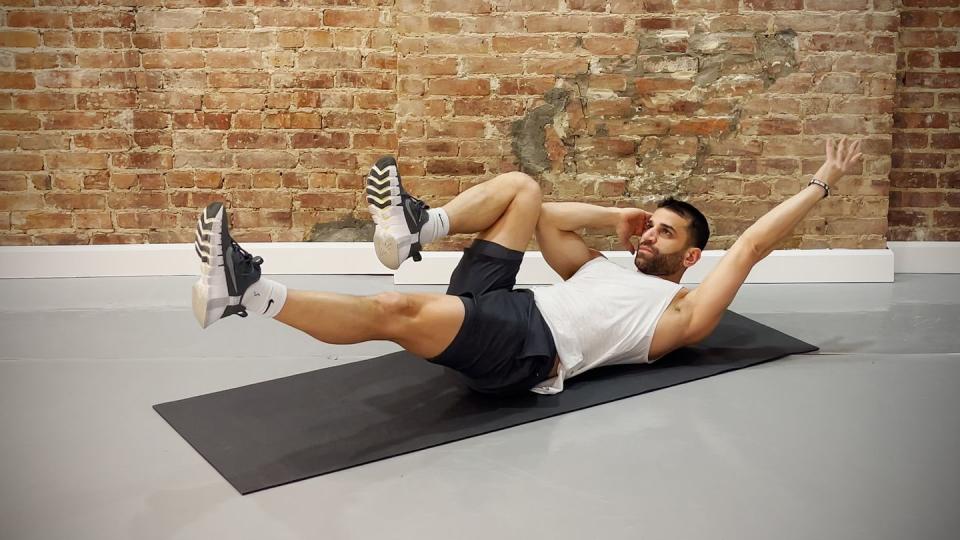
Why it works: The transverse abdominal muscles help to stabilize the pelvis when riding, Tamir explains. “The dead bug knee-to-elbow is a great exercise to strengthen these muscles,” he says.
How to do it: Lie faceup, both legs lifted, knees bent. Gently rest hands behind head and curl spine upward so that chest is lifted and knees and elbows touch. This is the starting position. Keeping core engaged, simultaneously straighten right leg and extend right arm behind you. Draw arm and leg back to starting position. Then repeat on left side. Continue alternating. Do 10 reps on each side.
2. Glute Bridge March
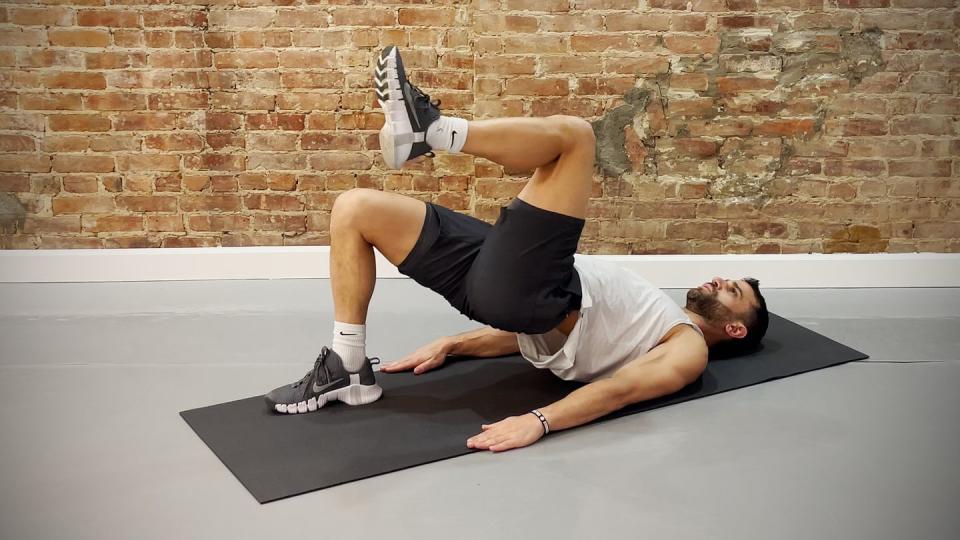
Why it works: “The glute bridge march targets the posterior chain, including the glutes and hamstrings, but also hits the deep muscles of the lower back (multifidus) and to a lesser degree, the transverse abdominals,” Tamir says. “Also, because you are resisting rotating your hips, the obliques are working.” Tamir’s number-one tip: “Make sure not to hyperextend the lower back by bridging too high.”
How to do it: Lie faceup, knees bent, and feet planted on the floor. Drive through heels, contracting the glutes to lift hips up toward the ceiling. Body should form a straight line from shoulders to knees; this is the starting position. Keeping hips raised and knees bent, lift right foot off floor, and draw right knee toward chest. Place right foot on floor to return to starting position and repeat with left leg. Continuing alternating. Do 10 marches on each leg.
3. Forearm Plank Walk-Back
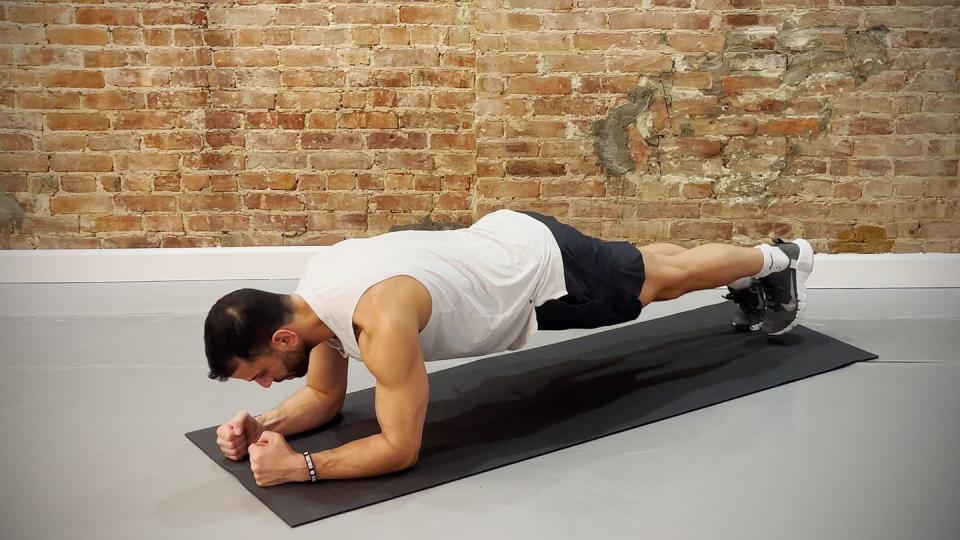
Why it works: “The forearm plank walk-back takes a regular plank and lengthens the lever, making it more challenging and forcing the transverse abdominal muscles and the multifidus to work harder. This makes the deep core muscles stronger for a cyclist’s performance,” Tamir says.
How to do it: Lie facedown on mat, tuck toes, and prop yourself up on forearms with elbows under shoulders. Lift hips off mat, keeping back straight and abs tight. Engage glutes and legs to prevent hips from lifting or dipping so body forms a straight line from heels to head. Keeping toes tucked, step right foot backward an inch or two, then follow with left foot. One at a time, step feet back a few more inches, allowing body to shift backward—go only as far as you can while keeping proper form. Using small steps, walk feet forward until shoulders are over elbows. That’s one rep. Repeat. Do 8 reps.
4. Copenhagen Plank
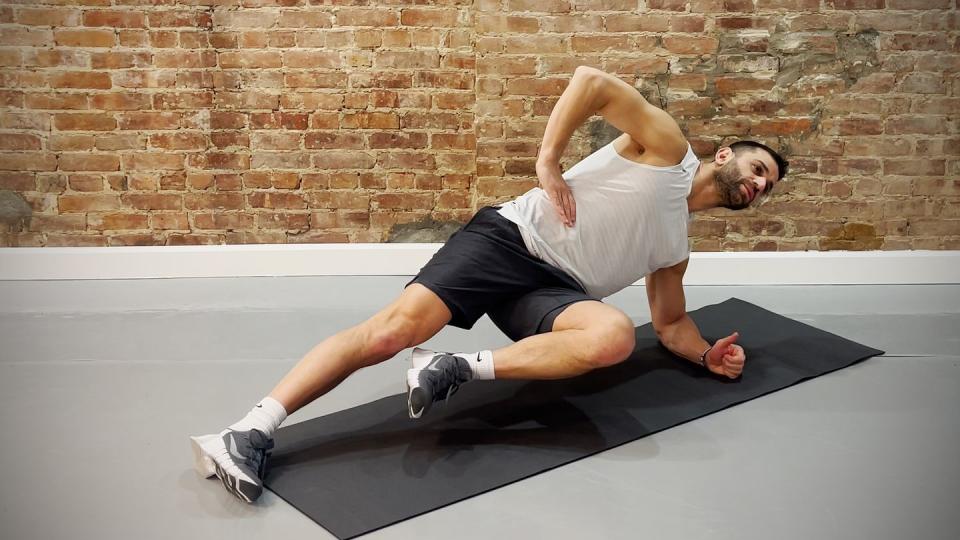
Why it works: “The Copenhagen plank helps to strengthen the obliques while also strengthening the adductor muscles that are connected to the hip joint,” Tamir says. The obliques also help the lower and upper body function together while riding to control rotation and lateral flexion of the torso, he adds. If you want to ramp up the level of difficulty, Tamir recommends resting the top leg on an elevated surface, like a step or bench.
How to do it: Lie on right side with right forearm on ground and left hand on hip, legs straight, left foot slightly staggered behind right foot. Lift hips and right foot off ground and bend right knee 90 degrees so that right leg is hovering a few inches above ground. Hold for 20 seconds. Switch sides and repeat.
5. Bear Plank Lift
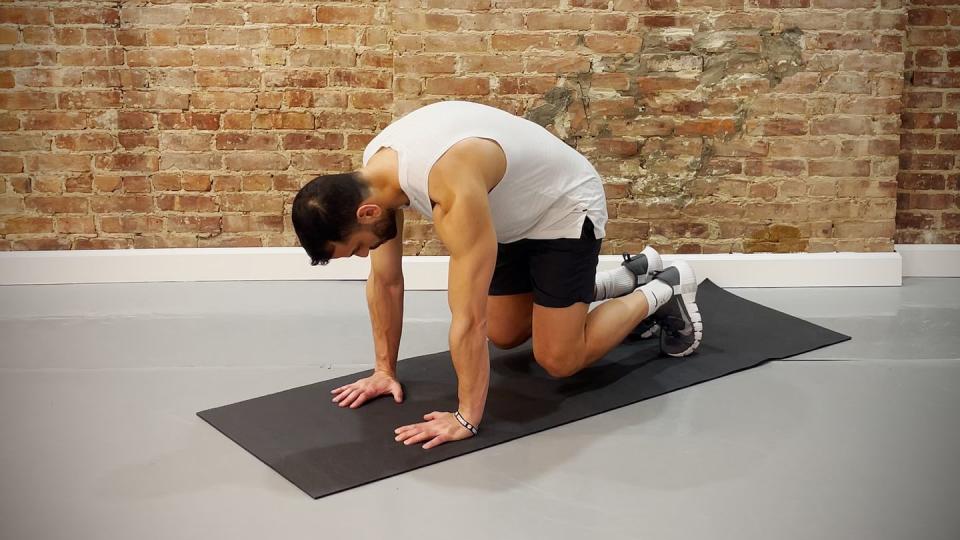
Why it works: “A lot of people’s days are spent sitting, which tightens the hip flexors, pulling the pelvis into an anterior position. This disengages the core and puts pressure on the lower back,” Tamir says. The bear plank lift helps prevent that misalignment.
How to do it: Start on all fours, shoulders over wrists, knees under hips. Engage core and arch upper back to separate shoulder blades and activate transverse abdominal muscles. Lift knees off ground and hold for one breath. Return knees to ground. Repeat. Do 8 reps.
You Might Also Like

